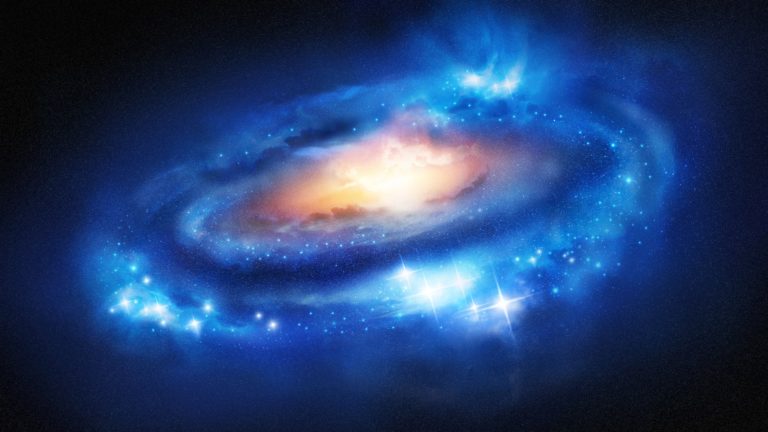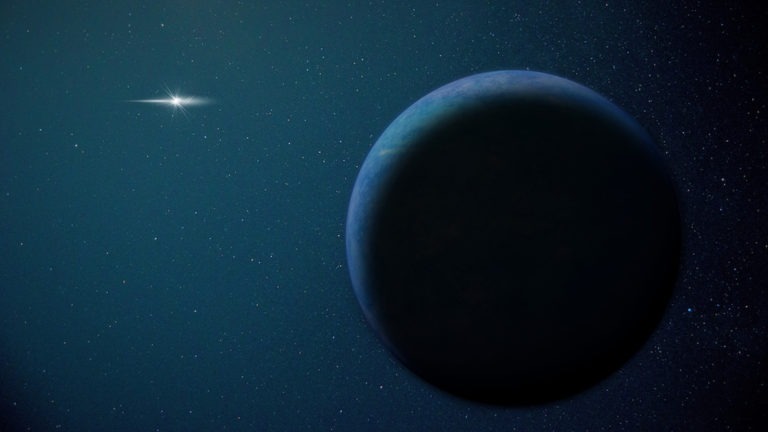72 New Galaxies Discovered in Hubble Ultra Deep Field

Back in 2004, the Hubble telescope peered into a dark part of the universe in the Fornax constellation just below Orion. After staring at this dark patch of space for nearly two weeks, it delivered an amazing view of the cosmos, packed with galaxies, stars, and planets. Now, astronomers have pointed a spectroscopic telescope at that same point in space resulting in 72 new galaxies discovered, increasing our chance of finding extraterrestrial life.
A Number of New Galaxies Discovered
Originally obtained in the early 2000s, Hubble’s images of a vast array of galaxies was a profound discovery that became known as the Hubble Ultra Deep Field or HUDF. With this data, scientists were able to take a step back in time, much closer to the beginning of the universe when galaxies were originally formed.
Within the HUDF, scientists captured light from 1600 new galaxies, some of which were nearly 13 billion years old.
Some of the galaxies seen in this deep field were different than the typical spiral-armed galaxies we’re accustomed to seeing, like the Milky Way. These galaxies were shaped like bracelet links and toothpicks at a time when the universe was starting to calm down from its initially chaotic phase.

nasa.gov
Now, astronomers from the European Space Organization (ESO) at Chile’s Very Large Telescope (VLT) have applied a technology known as spectroscopy to the HUDF, in order to see galaxies that are only visible in certain ultraviolet light, known as Lyman-alpha light. Prior to employing spectroscopy, these galaxies were invisible to the Hubble telescope, even though they were perfectly within its frame.
A spectroscopic telescope splits up the light it takes in into an array of individual colors. This allows scientists to glean details about galaxies and stars, such as their distance, age, and the elements they’re composed of. This discovery by the VLT was the most in-depth spectroscopic analysis yet.
The Potential for Finding Life
The sheer vastness of the universe is practically incomprehensible except when described in what are essentially abstract numbers. The billions of galaxies, containing billions of stars, and subsequently trillions of planets aren’t easy for us to fathom.
Despite the difficulty in wrapping our heads around this quantity, one can at least revel in the fact that we’ve reached the point of being aware of the magnitude of our universe. And the data also provides for a greater opportunity that extraterrestrial life is likely to exist out there.
With the new discovery of 72 previously unknown galaxies, we’re upping that probability significantly. If we consider the estimate that, within the Milky Way alone, there are anywhere between 100 million to 400 million stars, with an average of 8 planets orbiting at a reasonable distance (if we use our solar system), then there are anywhere from 800 billion – 3.2 trillion planets in our galaxy alone.
Take that number and apply it to these 72 new galaxies discovered and there are anywhere from 57 – 230 trillion or more potential planets. This makes the chance that we’re alone in this universe sound pretty unlikely. The question is whether we’ll ever make contact.
In addition to furthering our search for extraterrestrial life, the ESO has employed Chile’s VLT to study dark matter, the enigmatic force that perpetuates the expansion of the universe. This dark matter also makes up about 75 percent of the matter in the universe, theoretically. Scientists have debated about what dark matter could be, classifying it into two types, WIMPs and MACHOs – so clever with their acronyms.
WIMPs are weakly interacting, massive particles, while MACHOs are massive, astrophysical, compact halo objects. WIMPs are more elusive and different from matter as we know it, acting through electromagnetic forces. MACHOs are matter like dead or dying stars, black holes, and neutron stars. These are more familiar matters that aren’t as luminous as other cosmic phenomena of their ilk, therefore they could be nearly invisible to us.
The VLT has imaged these MACHOs in action and believes they are the culprit behind the enigma of dark matter. Sometimes this dark matter is so strong that it can warp the fabric of space-time itself as seen in a recent Hubble picture of a galaxy cluster known as Abell 2537.
What other discoveries might this novel spectroscopic technology provide for us?
Scientists Have Found Evidence of a 9th, Super-Earth Sized Planet

For years there has been speculation as to whether a ninth planet exists beyond the currently known threshold of our solar system. This planet has now been discovered and it’s 20,000-year orbital period may explain why we’ve had trouble finding it.
By observing the strange elliptical orbits of a number of large asteroids, scientists have determined that a massive, rocky planet must exist in the outer reaches of our solar system. They found that these asteroids have such elongated orbits beyond the Kuiper Belt, the ring of bolides beyond Neptune, that there must be a large planetary body pulling them out.
A newly discovered asteroid, 2015 BP519, added to the evidence from a group of what astronomers call Trans-Neptunian Objects, that swing out in strange directions. And though astronomers haven’t pinpointed the planet, it is the most plausible explanation for these TNOs’ orbital paths.




































